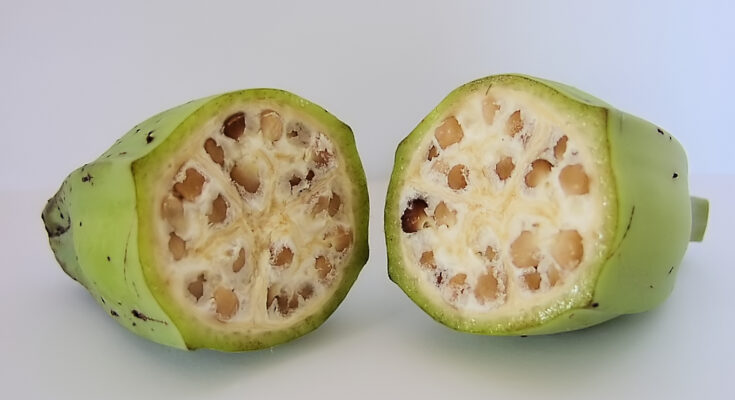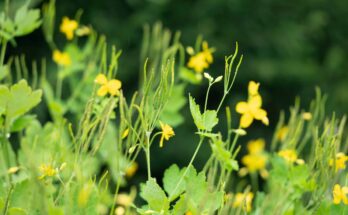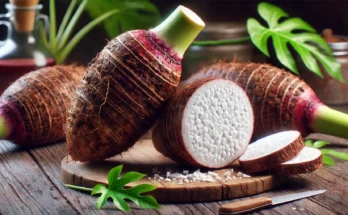Fruits, as we know them today, are a product of millions of years of evolution and, in many cases, selective breeding by humans. But have you ever wondered what fruits looked like before humans started cultivating them? Before the age of agriculture and modern farming practices, wild fruits were a far cry from the brightly colored, oversized versions we are familiar with today. Let’s take a journey into the past and explore how fruit looked before humans played a role in shaping their current form.
1. The Origins of Fruit: Wild Beginnings
Wild fruit species have existed for millions of years, long before humans began domesticating plants. In their natural state, these fruits were often smaller, less sweet, and more bitter than the varieties we consume today. The evolutionary purpose of these fruits was to attract animals and birds that would disperse their seeds, helping plants spread and reproduce.
For example, wild apples (Malus domestica) were much smaller, often no bigger than a walnut, and their taste was more tart or even sour. Similarly, wild strawberries were more like tiny, delicate berries with a less intense sweetness, often in a muted red or purple hue rather than the vibrant colors we associate with them today.
2. The Transformation of the Banana: From Tough to Tasty
One of the most dramatic changes in fruit appearance and taste has occurred in the banana. The wild ancestor of the modern banana, Musa acuminata, is thought to have been native to Southeast Asia. These early bananas were small, filled with large, hard seeds, and had a tough, starchy texture. They were far from the soft, sweet, seedless fruit we enjoy today.
Over thousands of years, humans selected bananas with fewer seeds and softer flesh. Through cultivation, bananas were transformed into the sweet, seedless fruit we now consume, but their wild ancestors were tough, bitter, and far less palatable.
3. Peaches: A Fuzzy Transformation
Peaches have also undergone significant changes through selective breeding. Wild peaches were much smaller, with a much more bitter taste. Their fuzz-covered skin was tougher, and the flesh was often more fibrous and acidic. The modern peach, with its juicy, sweet flavor and velvety skin, owes much of its transformation to early human cultivation.
In their wild form, peaches were smaller and not as tender. They also had larger pits and less flesh surrounding them. Over centuries, humans selectively bred peach varieties that were larger, sweeter, and more aesthetically appealing, eventually creating the fleshy, smooth-skinned fruit we enjoy today.
4. Tomatoes: From Bitter Berries to Juicy Fruit
The tomato, now a staple in global cuisine, was once a wild, bitter berry native to western South America. Early wild tomatoes were small, round, and often green or yellow in color. Unlike the plump, juicy tomatoes we grow today, the wild ancestors were filled with hard, bitter-tasting seeds.
Early humans began cultivating tomatoes, selecting for sweeter varieties with fewer seeds. This process resulted in the large, fleshy tomatoes that we use in everything from salads to sauces today. But before human intervention, tomatoes were small, acidic, and less palatable.
5. Grapes: From Tiny and Sour to Sweet and Plentiful
Wild grapes, which date back to ancient times, were very different from the sweet, juicy varieties we now enjoy. While wild grapes have been cultivated for thousands of years, their original forms were much smaller and often far more sour than their modern counterparts.
Grapes, in their wild form, often had thicker skins and larger seeds. They were also much less sweet, which made them more suitable for fermentation into wine rather than fresh consumption. Over time, through careful selection, humans created varieties of grapes that were sweeter, with fewer seeds and a thinner skin, resulting in the varieties we consume today.
6. Watermelons: From Bitter Gourds to Refreshing Fruit
The watermelon is another fruit that has undergone a significant transformation. Wild watermelons were small, hard, and filled with seeds. The flesh was pale and often bitter, not the sweet, juicy red or pink interior we are used to today. These early melons were more akin to gourds than the refreshing summer fruit we know.
Over time, watermelon cultivation focused on increasing the sweetness and size of the fruit while reducing the number of seeds. Today’s seedless watermelons are the result of centuries of careful cultivation. Wild watermelons, in contrast, would have been far less desirable to eat in their natural state.
7. The Role of Humans in Shaping Modern Fruit
Human intervention has played a central role in the transformation of fruits. Early humans, particularly through agriculture and trade, began selecting the largest, sweetest, and most nutritious varieties to cultivate. These varieties were then crossbred and refined over generations. The result was the creation of fruit that suited human tastes and needs, whether for direct consumption, use in cooking, or for preservation.
But the process of transforming wild fruits into modern cultivars wasn’t always easy. It involved trial and error, as humans learned what worked and what didn’t. In some cases, human intervention led to fruits that were not only larger and sweeter but also easier to harvest, store, and transport.
8. The Impact of Selective Breeding on Fruit Diversity
While selective breeding has created some of the most beloved fruits of today, it has also had an impact on genetic diversity. Many modern fruits, like apples, bananas, and peaches, have been bred to favor certain characteristics such as size, sweetness, or appearance. As a result, certain genetic traits have become more prominent, while others have diminished or disappeared entirely.
This loss of genetic diversity can make crops more vulnerable to disease, pests, and climate change. However, some farmers and conservationists are working to preserve the genetic diversity of fruit species, often by reintroducing heirloom or wild varieties back into cultivation.
9. A Fruitful Journey from Wild to Cultivated
The fruits we eat today are the result of a long and fascinating history of evolution, natural selection, and human intervention. Before humans began cultivating and selectively breeding fruits, they were small, often bitter, and designed primarily for the benefit of nature rather than for human consumption.
Today, many fruits have been transformed into the sweet, colorful varieties we enjoy, thanks to the careful selection and breeding practices of humans over thousands of years. However, the story of fruit evolution is far from over. As climate change and agricultural challenges continue to shape our world, new varieties may emerge, and the fruits of tomorrow could look quite different from those of today.
By understanding how fruits looked before humans got involved, we gain a deeper appreciation for the fruits on our tables and the incredible natural processes that have shaped them over millennia.



